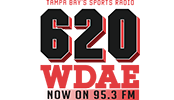Win Totals: Cracking the Juice
There’s no way around it; win totals are a major topic of discussion among bettors and sports media members. During the dog days of summer we long for toe to meet leather signifying the start of football season. From the moment the Superbowl ends, football bettors seek milestones; win totals provide the light at the end of the tunnel. Anything to grab onto as tangible proof football season is right around the corner. However this article isn’t about the surge in popularity of win totals but rather to help explain how to read into the lines and understand what the sportsbook’s numbers are telling you.
Yesterday marked the release date for a number of win totals from 5Dimes for the upcoming season. Mixed in the batch were high profile programs like Alabama and Notre Dame but also the likes of Indiana and Central Florida (save your breath Hoosier trolls). Given that 5Dimes were first to market, their oddsmakers elected to employ .40 cent lines on each win total. What do I mean when I say .40 cent lines? When I use the term .40 cent line that explains the differential between the price you’d need to lay to back the favorite compared with the price you could take when supporting the underdog. Plain and simple; larger the differential between a favorite and underdog, the higher the hold for the house making it disadvantageous for bettors. To put it in perspective, the most competitive shops booking baseball use a .10 cent line (-115/+105) making it the lowest hold sport of any major market. Below is a chart to help explain the juice generally accepted within the industry for betting each sport. If your shop doesn’t offer these prices (or something similar), begin exploring other betting outlets.
| Accepted Industry Holds | |||
| .10 Cents | Baseball | ||
| .20 Cents | Football, Basketball, Hockey | ||
| .30 Cents | Props, Win Totals, NASCAR Matchups, Series Prices | ||
| .40 Cents | Specialty Props with low limits | ||
When a book elects to use a larger line, the general implication is that the market isn’t nearly as efficient reflecting an oddsmaker’s diminished confidence. That’s why props generally fall into this category and books elect to use a .30 cent line (-145/+115) to limit potential liability. Using a wider spread for a particular market combined with low limits are safeguards the house employs to protect themselves from sharper bettors. Larger limits mean greater confidence in the strength of their numbers and it’s exactly why books take bigger bets on the NFL than they do the WNBA. Market cap and overall volume have major impacts on how every sport is traded. However, I’m getting away from the topic at hand, win totals, so before losing everyone’s attention span I’ll get back on topic.
| Alabama 2013 regular season wins – conference championships & bowl games do not apply | |||||||
| Sat 8/31 | 30005 Alabama total wins over 11½ | +170 | |||||
| 12:00PM | 30006 Alabama total wins under 11½ | -230 | |||||
First things first; this market opened yesterday with Alabama at Over 11.5 +140/Under 11.5 -180 so we’ve already seen a pronounced move. At the same time, realize limits for these win totals are low compared to mature markets and won’t take the same bet size to move a price. You’ll also notice 5Dimes moved the line as far as they could without providing an arbitrage opportunity for their bettors. In Layman’s terms: the best price you could have on Under 11.5 is Alabama -180 but only take Alabama Over 11.5 at +170. Creating arbs in their own market is a big concern for books and they’ll do everything they can to eliminate the free money opportunity for bettors.
The next logical question is what does the -230 mean? This huge tariff attached to the under says Alabama is much more likely to finish their regular season 11-1 than they are to run the table. Not quite rocket science but you’d be surprised with how many bettors don’t understand that betting under 11.5 under -230 doesn’t mean 5dimes believes this is Alabama’s true price. In actuality this is more reflective of a team they believe will win 11 games but rather than set it there which would probably mean a push, using 11.5 with juice forces a bettor into a decision. The thing about laying -230 on a season long win total to go under shows a very high level of confidence especially when you consider the Tide will only be favorites of less than a TD all season long.
Don’t be that bettor falling into the trap of calling a win total 8.5 unless the juice is no more than -125 either way. A win total posted at 8.5 over -225 is basically a 9 and should prompt you to ask yourself “how valuable is a half game to me when shopping for numbers?” Do your homework and go in with a gameplan, understand the financial impact of each decision. When betting college win totals (more so than the NFL) there are times it makes sense to lay heavier price tags for each half game worth of value because in my opinion a half game there is worth much more than it is in the parity driven pros.












